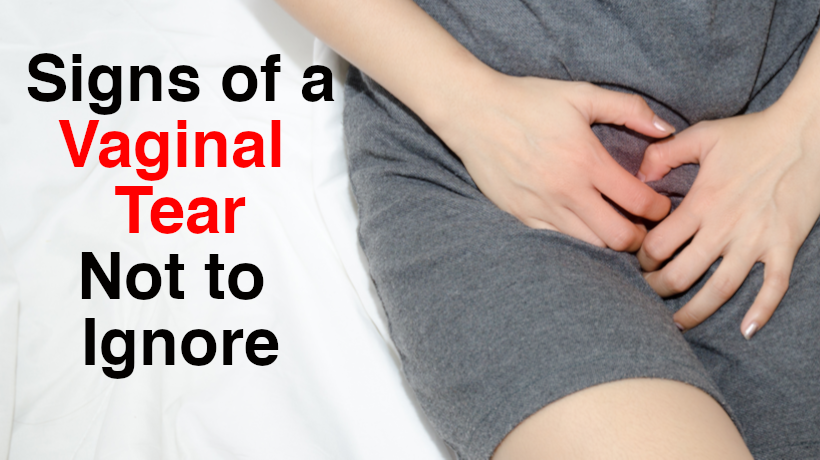Vaginal tears, also called vaginal lacerations, are injuries in the vaginal tissue that occur throughout the vagina, according to Tanya Tantry, M.D. Tears can occur in the vagina, labia, and perineum. According to Anita Sadaty, M.D., severe vaginal tears are often caused by childbirth, but smaller vaginal cuts are very common. Here are causes that can result in vaginal tears, signs you may experience if you have a vaginal tear, and what can help treat it.
Causes of Vaginal Tear
Tantry explains that one of the most common causes of vaginal tears occurs during childbirth, also known as an obstetric tear. These tears happen during labor when the presentation of the baby stretches the tissue of the vagina and perineum, when it is overstretched it tears. Tantry says it is more likely to happen during first-time vaginal delivery and if the baby weighs more than 9 pounds. One of the most common causes of non-obstetric vaginal tearing is penetrative sex. According to Sadaty, other causes include putting a foreign object into the vagina, improper insertion and removal of tampons, vaginal dryness, thinning of the vaginal tissue due to age, and removal of pubic hair.
Signs of Vaginal Tear
According to Sadaty, these are some of the signs that you need to pay attention to if you may be experiencing vaginal tear:
- Mild pain
- Stinging when urinating or after contact with water or semen
- Discomfort when inserting a tampon
- Discomfort during sexual intercourse
- Slight bleeding or spotting
- Itching, burning, or a tearing sensation
- A cut, split, or damage to the vaginal tissue or the vulva
What Can Help Treat It
According to the Cleveland Clinic, women feel relief from any pain caused by a vaginal tear in about two weeks. If your tear required stitches, like because of childbirth, they will dissolve within six weeks. Treatment of vaginal tear will involve self-care and maybe require medical treatment. According to Sadaty, for minor vaginal cuts, you can follow self-care tips to heal. These include avoiding sex and any type of foreplay, wearing cotton underwear, keeping the area clean and dry, avoid touching the affected area, bathing or showering daily, not using tampons, and drinking more water to make urine less acidic to decrease painful urination. Looking for professional help would be best if your vaginal cuts don’t heal readily, those that become infected, or that are caused by underlying conditions.



